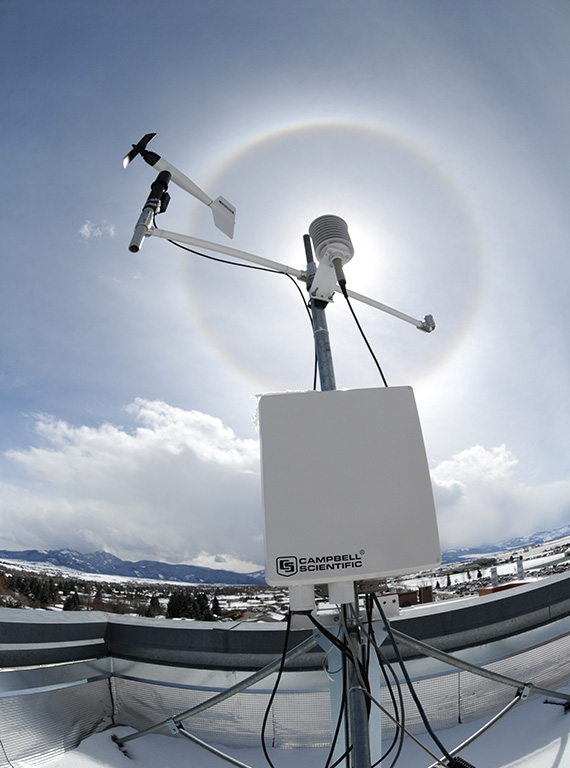Information About Units
Pressure
Pressure is measured in millibars (mb) and inches of Mercury (inHg). 1 mb = 0.02953 inch Hg.
What are the "adjusted" values for pressure? Pressure varies in time due to weather conditions, but in general, the pressure is also less at higher altitudes. If all you care about is weather, you might want to adjust all pressure measurements at different altitudes to read as if the measurements were taken at sea-level, so that you can compare them easily. Good idea! In fact, this sort of adjusted reading is already what you get from the airport, or when you tune into the forecast on the evening news. However, since we also are using the pressure data to calibrate our weather balloons (which don't know what altitude they are at apart from their pressure readings), we record both the unadjusted and the sea-level adjusted values.
Temperature
Temperature is measured in degrees Celsius and degrees Fahrenheit.
To convert from Celsius to Fahrenheit use F = (C * 9/5) + 32
Humidity
Relative Humidity (expressed as a percent) measures water vapor relative to the temperature of the air. In other words, it is a measure of the actual amount of water vapor in the air compared to the total amount of vapor that can exist in the air at its current temperature. Warm air can possess more water vapor (moisture) than cold air, so with the same amount of absolute/specific humidity, air will have a higher relative humidity if the air is cooler, and a lower relative humidity if the air is warmer. What we "feel" outside is the actual amount of moisture (absolute humidity) in the air.
Scattering Coefficients
Scattering Coefficients aremeasured in inverse megameters. Typically atmospheric aerosol scattering is fairly weak, so it is common to use inverse megameters (otherwise expressed as (m)^-6).
The coefficient signifies the amount of light scattered over a distance from airborne particulate matter (aerosols). Scattering is a form of light attenuation, or the reduction of light intensity, so the scattering coefficient is typically a good measure of atmospheric visibility. The scattering coefficient can also be thought of as a good measure of particulate pollution. Please reference the Beer-Lambert law for more information about the extinction coefficient and how the scattering coefficient relates to light intensity.

